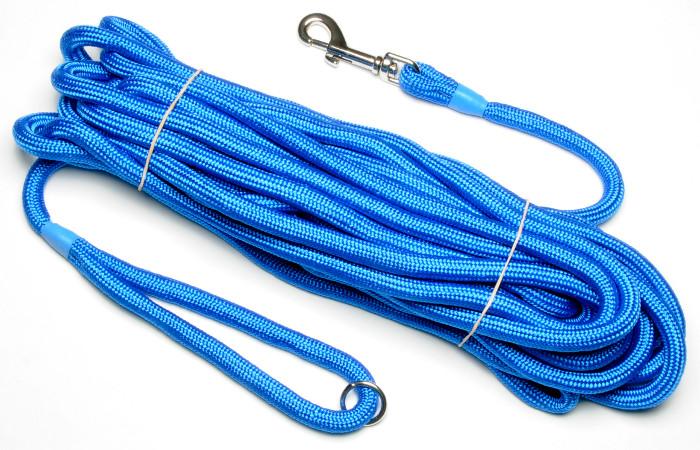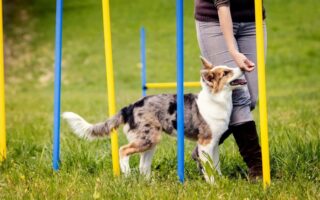In the world of dog training, the tools we choose can significantly influence the success of our efforts and the bonding experience we share with our canine companions. Among these tools, the long dog training lead emerges as a versatile and invaluable asset. It serves not only as a physical connection between handler and dog but also as a conduit for exploration, learning, and, ultimately, trust. Whether you’re teaching basic commands, encouraging focused recall, or simply inviting your pooch to savor the sights and sounds of the great outdoors, a long lead offers the perfect balance of freedom and control. As we delve into the benefits, practical applications, and considerations of long dog training leads, we’ll uncover how this simple piece of equipment can transform your training sessions into engaging adventures, fostering a deeper connection with your furry friend along the way.
Table of Contents
- Exploring the Benefits of Long Dog Training Leads for Effective Obedience
- Choosing the Right Length: A Guide to Selecting the Ideal Lead for Your Dog
- Techniques and Tips for Mastering Long Lead Training Sessions
- Maintaining Safety and Control: Best Practices for Using Long Dog Training Leads
- Q&A
- Final Thoughts
Exploring the Benefits of Long Dog Training Leads for Effective Obedience
Long dog training leads are an invaluable tool for pet owners looking to enhance their dog’s obedience skills while ensuring their safety. Unlike standard leads, these longer alternatives provide the freedom for dogs to explore their surroundings, which is vital for their mental stimulation. The extended length facilitates a balance between training and play, enabling dog owners to establish commands effectively without the need for constant leash pulling or restraining. This approach not only enhances the dog’s learning experience but also fosters a deeper connection between the owner and their furry companion.
When utilizing a long training lead, one can reap various benefits that contribute to overall behavior improvement. Some of the key advantages include:
- Increased Exploration: Dogs can roam and engage with their environment, which is crucial for developing social skills.
- Enhanced Recall Training: With more distance, dogs learn to respond to commands while still feeling safe.
- Improved Focus: The added space allows for distraction training, honing the dog’s attention even with external stimuli.
- Reduced Anxiety: The freedom of movement can lead to less stress during training sessions.
Choosing the right long dog training lead involves considering various factors. Below is a simple comparison table highlighting essential features to look for:
| Feature | Leash A | Leash B |
|---|---|---|
| Material | Nylon | Leather |
| Length | 30 feet | 50 feet |
| Weight | Lightweight | Moderate |
| Durability | High | Very High |
Ultimately, the use of long dog training leads can significantly enhance the training process, allowing for effective obedience while ensuring dogs remain engaged and motivated. By finding a lead that aligns with your dog’s specific needs, you can cultivate better behavioral practices and a more enjoyable training experience.
Choosing the Right Length: A Guide to Selecting the Ideal Lead for Your Dog
When selecting the perfect lead for your dog, one of the most critical factors to consider is the length of the lead. A longer lead can offer greater freedom for your dog to explore while still maintaining control during training sessions. Here are a few important points to think about when choosing the right length for your dog’s lead:
- Training Needs: Longer leads are ideal for recall training and agility exercises, allowing your dog to practice distance while still being attached to you.
- Environment: Consider where you’ll primarily be using the lead—open areas may benefit from longer leads, whereas shorter leads are better for crowded or urban settings.
In addition to training and environment, the dog’s size and behavior also influence the appropriate lead length. For example, active and larger breeds may require longer leads to channel their energy effectively. Take a look at this helpful comparison table:
| Lead Length | Best For | Ideal Breeds |
|---|---|---|
| 10 Feet | Basic Training | Small to Medium Breeds |
| 15 Feet | Recall Training | Medium Breeds |
| 20+ Feet | Agility/Freedom | Active Large Breeds |
Techniques and Tips for Mastering Long Lead Training Sessions
Mastering long lead training sessions requires a blend of patience, structure, and creativity. To effectively engage your dog during these extended exercises, focus on positive reinforcement and clear communication. Use high-value treats or favorite toys to reward your dog for desired behaviors, ensuring they stay motivated throughout the session. Establishing a calm and consistent training environment is crucial; minimize distractions and have a designated area for practice. This helps your dog understand when it’s training time and what’s expected of them.
Integrating varied training techniques can keep sessions interesting and beneficial for your dog. Consider employing the following strategies:
- Short Focused Drills: Break down longer sessions into segmented drills, focusing on specific commands or skills.
- Frequent Breaks: Allow for short breaks between drills to reduce mental fatigue and keep your dog engaged.
- Play Intermissions: Mix playtime in with training, facilitating a fun and relaxed atmosphere.
- Use Visual Cues: Employ hand signals or visual markers to enhance understanding and communication.
To track progress during these extended training sessions, consider creating a simple table to log skills practiced and improvements observed. This will help you identify areas that need more work while also celebrating milestones.
| Skill | Date Practiced | Notes |
|---|---|---|
| Recall | 01/04/2023 | Improved response time. |
| Stay | 01/11/2023 | Maintained position for 1 minute. |
| Loose Leash Walking | 01/18/2023 | Less pulling – more focus on handler. |
Maintaining Safety and Control: Best Practices for Using Long Dog Training Leads
When utilizing long dog training leads, the foundation of effective and safe training lies in understanding your environment and your dog’s behavior. Always choose a suitable location for training sessions, such as a secure park or a yard. Avoid areas with heavy pedestrian traffic or potential hazards that could distract or scare your dog. Before attaching the lead, ensure that both you and your dog are calm to promote a fruitful training experience. Once secured, maintain a comfortable grip on the lead to prevent any sudden pulls that could startle your dog or lead to accidents.
Establishing clear signals and commands is vital when using long leads. Use positive reinforcement to encourage desired behaviors and reinforce your dog’s understanding of basic commands. A consistent routine will help your dog associate the lead with fun and learning rather than restriction. Additionally, monitor your dog’s distance to maintain control; if your dog ventures too far, gently reel them back in without abrupt movements. This practice not only enhances safety but also strengthens the bond between you and your furry friend.
Q&A
Q&A: The Long Dog Training Lead
Q1: What exactly is a long dog training lead, and how is it different from a standard leash?
A1: A long dog training lead is a specialized leash that typically ranges from 15 to 50 feet in length. Unlike standard leashes, which are generally 4 to 6 feet long, long leads allow for greater freedom of movement. This extended distance helps with training exercises, like recall, while still giving you control over your dog’s safety during outdoor adventures.
Q2: Why should I consider using a long dog training lead?
A2: There are several benefits to using a long lead. First, it provides your dog with the freedom to explore their surroundings while remaining under your supervision. This is especially useful during training sessions where you want to reinforce commands like “come” or “stay” without the risk of your dog running off. Additionally, long leads can foster a sense of independence, allowing your pet to experience a variety of sights, sounds, and smells without fully letting go of that vital safety tether.
Q3: Are there specific training techniques or activities that work well with a long lead?
A3: Absolutely! Long leads are ideal for a range of training activities, including:
- Recall Training: You can practice calling your dog back to you while giving them enough space to wander.
- Desensitization: Allow your dog to encounter new environments or distractions at a distance, helping them adjust gradually.
- Play and Exploration: Use the lead to give your dog more freedom to play fetch or explore while still keeping them secure.
Q4: What should I look for when choosing a long dog training lead?
A4: When selecting a long dog training lead, consider the following features:
- Material Quality: Look for durable materials like nylon or biothane that can withstand wear and tear.
- Width: Wider leads can help distribute pressure more evenly, making it easier to handle strong pullers.
- Attachment Points: A lead with multiple attachment points can offer versatility for different training situations.
- Weight: Depending on your dog’s size, the lead should be lightweight enough for ease of handling yet sturdy enough for strength.
Q5: How can I ensure that I use a long lead safely?
A5: To use a long dog training lead safely, follow these tips:
- Choose the Right Environment: Use the lead in safe, open spaces away from heavy traffic or other potential hazards.
- Supervised Exploration: Always keep an eye on your dog while they’re on the long lead, as they can reach areas you might not expect.
- Check for Wear: Regularly inspect the lead for any signs of fraying or damage and replace it if necessary.
- Train with Caution: If your dog is still mastering recall or tends to be overly curious, practice in a controlled environment before transitioning to more distracting settings.
Q6: Can a long dog training lead be used for all dogs?
A6: Most dogs can benefit from the use of a long training lead; however, it’s essential to assess your dog’s training level and temperament. For dogs with high prey drives or poor recall skills, a long lead can be extremely beneficial. Conversely, if your dog is easily startled or has leash reactivity issues, a long lead may not be the ideal choice. In these cases, consulting with a professional dog trainer may provide tailored advice.
Q7: Are there any drawbacks to using a long dog training lead?
A7: While long leads offer many advantages, there are a few drawbacks to consider. They can become tangled easily and may require more effort to handle than a standard leash. Additionally, if you’re in a crowded area, the extra length can be cumbersome and difficult to manage. relying on a long lead too heavily without reinforcing basic commands may lead to underdeveloped training. Balancing freedom and structure is key!
Q8: What are some tips for transitioning my dog to a long training lead?
A8: Gradual introduction is essential when transitioning your dog to a long training lead. Start by letting them wear the lead in a familiar and safe area without applying any tension, allowing them to get used to the length. Gradually increase the distance as they become comfortable. Incorporate reward-based training methods to reinforce positive behaviors when using the long lead, ensuring the experience remains engaging and enjoyable for your dog.
a long dog training lead can enhance your dog’s training experience by offering freedom and safety simultaneously. Just remember to choose wisely, train patiently, and enjoy the journey together!
Final Thoughts
a long dog training lead can be an invaluable tool for both novice and experienced pet owners seeking to enhance their dog’s training experience. It offers a unique blend of safety, control, and freedom, allowing dogs to explore their environment while still being guided by their handlers. As you embark on your training journey, remember that patience and consistency are key. Embrace the adventure of bonding with your furry companion and watching them thrive in a more expansive training environment. Whether you’re teaching recall, practicing commands, or simply enjoying a stroll in the great outdoors, the right lead can turn everyday moments into opportunities for growth. So, clip on that long lead, and watch as your dog blossoms into a well-mannered, confident canine. Happy training!



